A river cruise on the Nile is a traditional method of seeing the country. Having sailed across Lake Nasser, we now embarked on our river cruise from Aswan to Luxor.
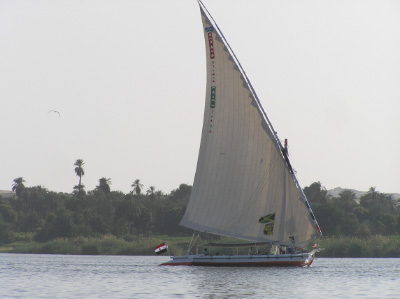 |
|
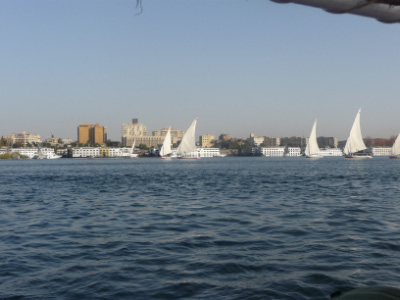 |
Feluccas (sailboats) have been used on the Nile since the days of the pharaohs. Since the river runs north and the prevailing winds blow south, sailboats can go in either direction (winds permitting); they usually also have oars.
|
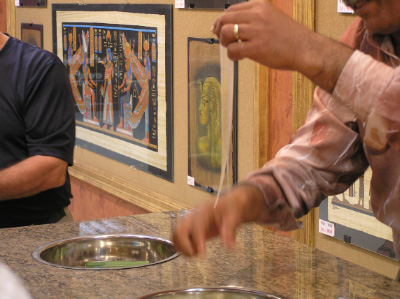 |
|
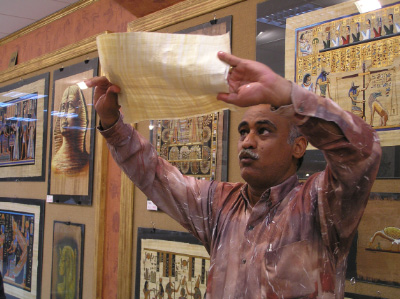 |
We visited a papyrus shop and were given a demonstration on the ancient art of making the writing material. Of course, papyrus was used for many other things besides paper, including boats and ropes, but we always think of it as a writing material.
|
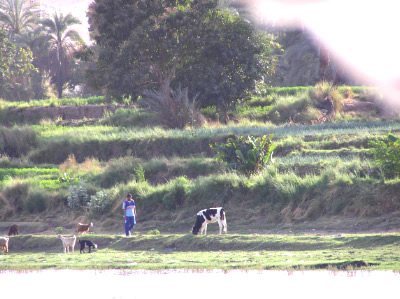 |
|
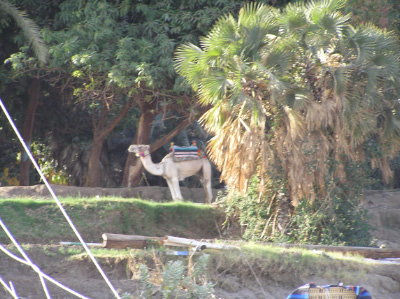 |
We took two trips along the Nile, one by felucca and one by motorboat. Just outside of the city (Aswan) and even on the opposite bank from the city, the scenery became very pastoral. Egyptians are never far from their roots.
|
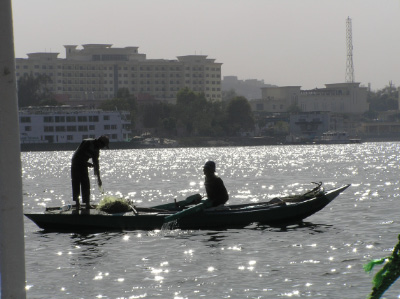 |
|
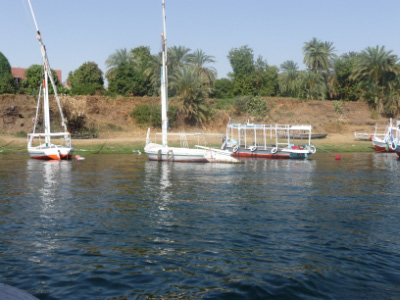 |
Fishermen still catch their daily food in the traditional manner.
|
|
Many Nile boats, though, are used for tourists, both tourist feluccas and covered tour boats.
|
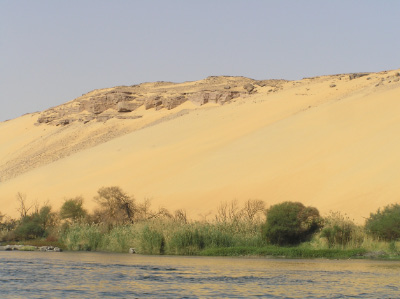 |
|
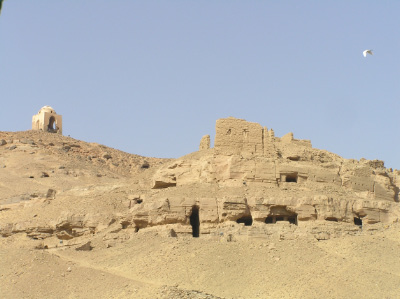 |
The desert is always there, beyond the thin strip of green that is the inhabitable banks of the Nile.
|
|
The tombs outside of Aswan are the Tombs of the Nobles. They date from the Old Kingdom (contemporary with the pyramids).
|
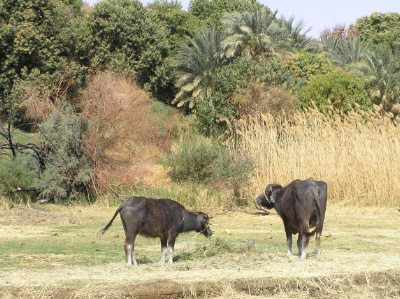 |
|
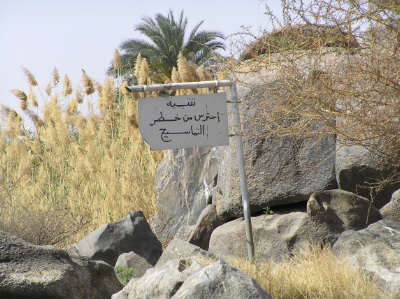 |
Water buffalo are an important source of milk and meat for the Egyptians.
|
|
The sign, located in a wildlife preserve, warns about crocodiles, even though there are no longer any crocodiles north of the Aswan Dam. But if someone were to release one, there would be plenty of food in the river to sustain it.
|
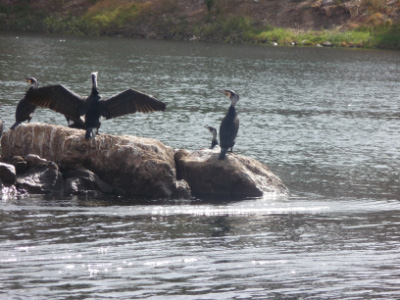 |
|
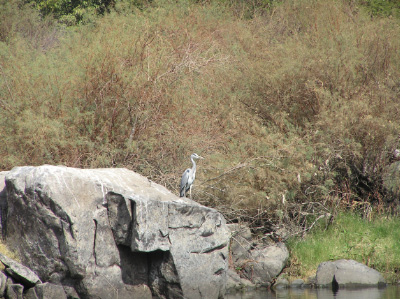 |
OK, this wasn't a big trip for wildlife, but we did at least see cormorants and great blue herons (just like home!).
|
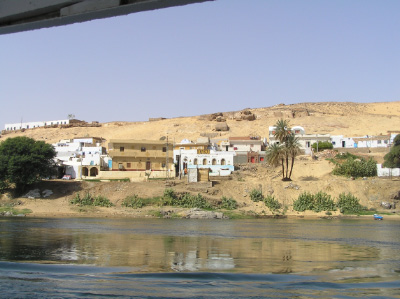 |
|
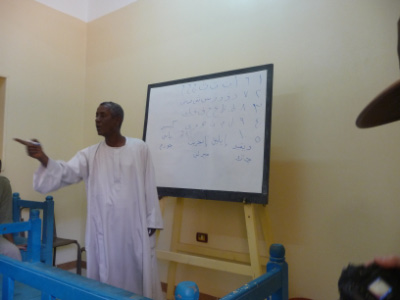 |
We visited a Nubian village--one of the places where Nubians were resettled after their traditional homes were flooded.
|
|
The showplace of the village was the school, where we were ushered in for a lesson in Arabic. the teacher tried (with limited success) to teach us the letters and numbers--we never knew until this trip that Arabs (at least Egyptians) don't use Arabic numerals.
|
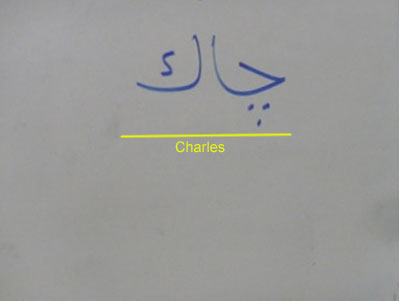 |
|
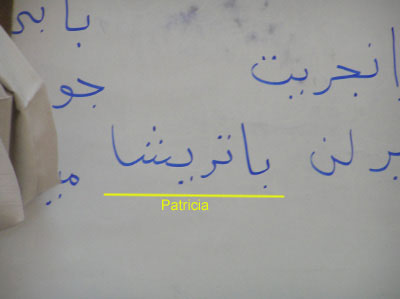 |
The teacher also went around the room and wrote everyone's name on the board. Here are Charles and Patricia.
|
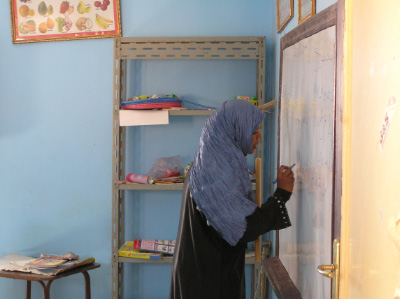 |
|
 |
These students were probably way ahead of us in their ability to read Arabic, for all that they were only about four years old.
|
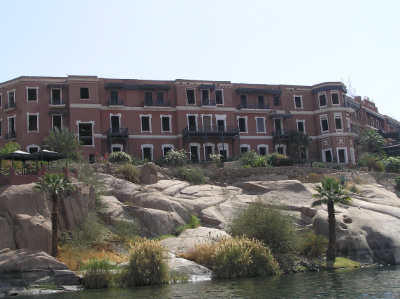 |
|
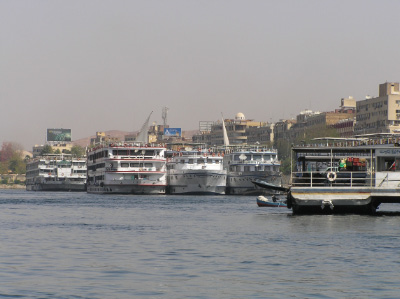 |
The Cataract Hotel is famous primarily because it is where Agatha Christie wrote Death on the Nile--which Pat was reading during this part of the trip.
|
|
All of the towns along the Nile were crowded and cruise boats (including ours) docked three or four abreast. So we had to walk through other ships in order to reach the dock whenever we went ashore. It was also a good reason to keep the curtains in your cabin closed!
|
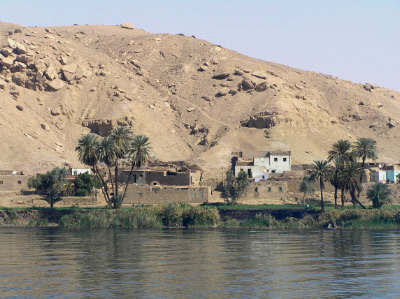 |
|
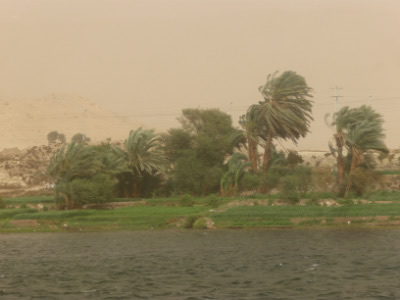 |
There were smaller villages, or even large estates, along the river that seemed as isolated now as they must have been since they were built.
|
|
On the last day of our Nile cruise we encountered a truly Egyptian phemonenon--the Sahara sandstorm. It arose within minutes and the air turned brown, the outside areas of the boat had to be closed, and sand got into everything that wasn't sealed.
|
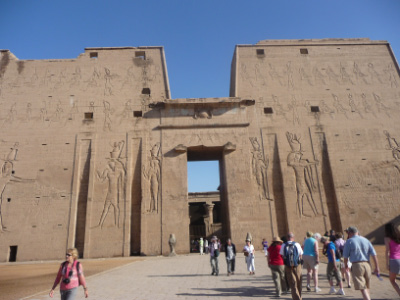 |
|
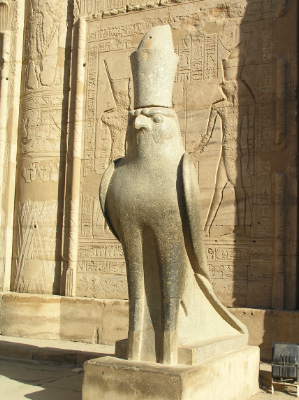 |
Luckily the storm had abated before we arrived at our last stop on the cruise, Edfu. This huge temple dates from the Greek (Ptolemaic) period (ca. 300-50 BC) but closely resembles earlier Egyptian temples.
|
|
The temple is dedicated to the god Horus, the embodiment of the pharaoh after his death. The Ptolemies were perfectly happy to worship Egyptian gods, especially those that emphasized the power of the pharaoh (i.e. Ptolemy).
|
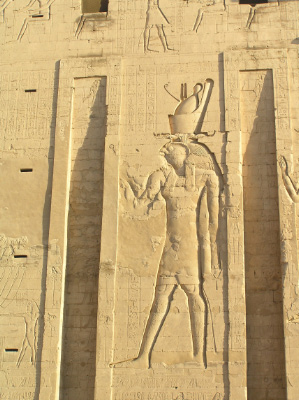 |
|
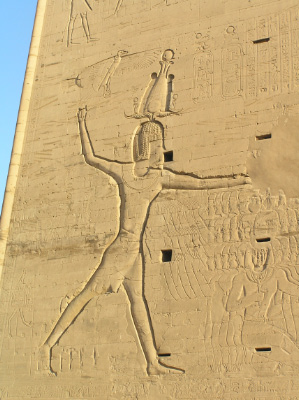 |
Horus, wearing the traditional crown of the pharaoh, guards one side of the gate.
|
|
The pylon also has carvings of Ptolemy XII, dressed as the pharaoh, defeating his enemies. It looks just the many pictures of Ramses II killing the Hittites.
|
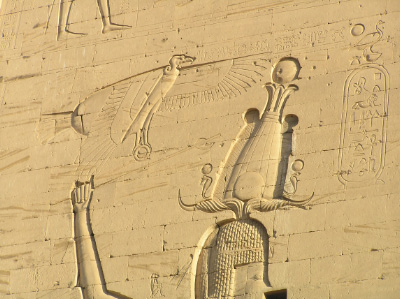 |
|
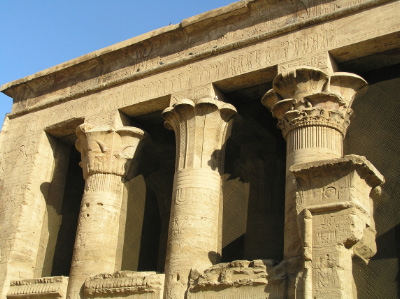 |
In this case, Ptolemy is protected by a hovering vulture (a good symbol in Egyptian mythology).
|
|
One way that you can tell that this is a later (Ptolemaic) temple is the variety of capitals on the columns--papyus, lotus, and variants.
|
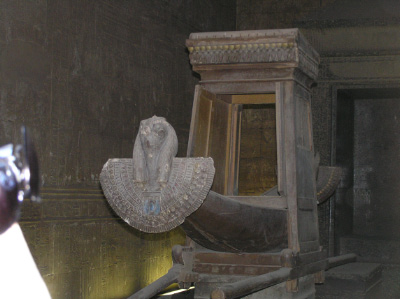 |
|
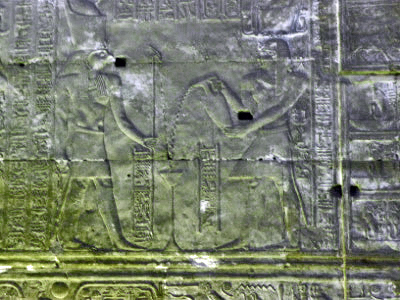 |
The innermost room of the temple contains the sacred boat of Horus that would have been carried in an annual procession.
|
|
A relief of an offering being poured to Horus--the Egyptians had mastered the art of showing liquid pouring from a vessel.
|
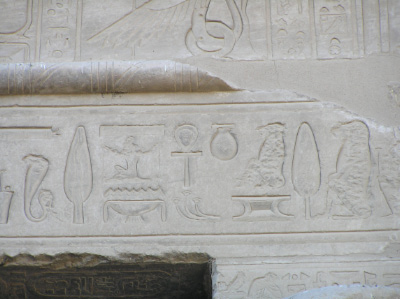 |
|
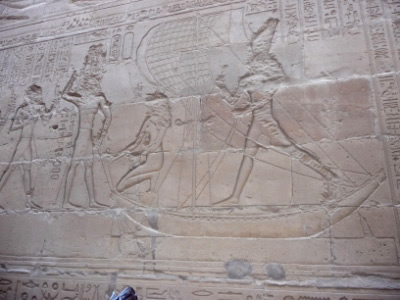 |
The Christians later used the temple but chiseled out all the human figures, even from the hieroglyphic inscriptions. Here the feather and the ankh were left alone but the people have been defaced.
|
|
Some of the carvings in this temple are exceptionally fine, such as the boat here with the lines and sail clearly visible (but the faces of the people chiseled off).
|
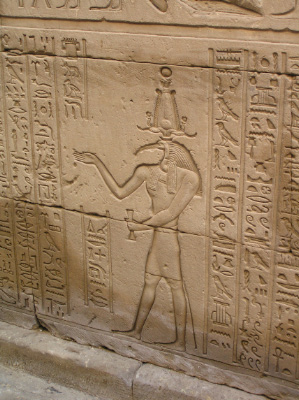 |
|
|
| The god Thoth, with an ibis head. He was the inventor of writing, and the keeper of records in the underworld, where you were called to account for your deeds in life. |
|
|
























